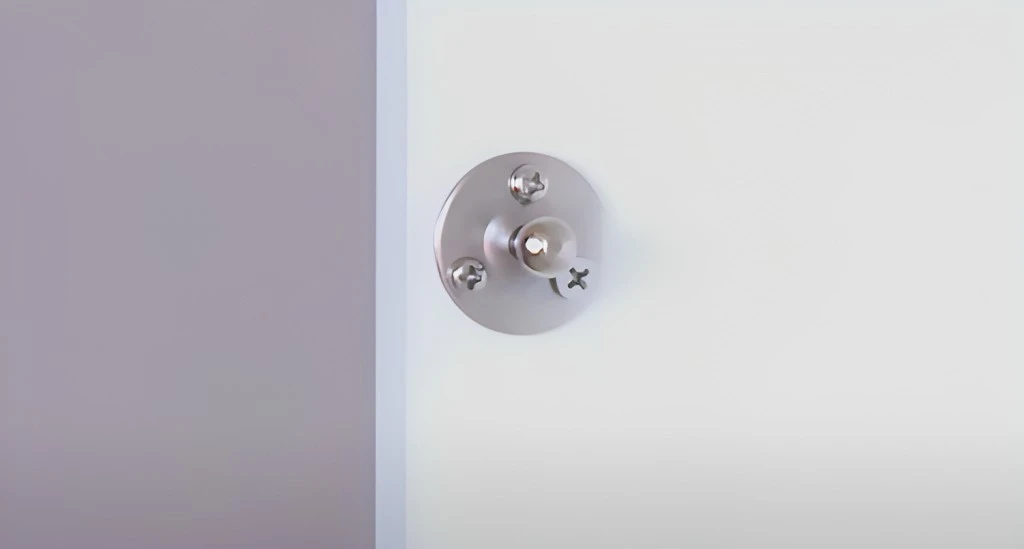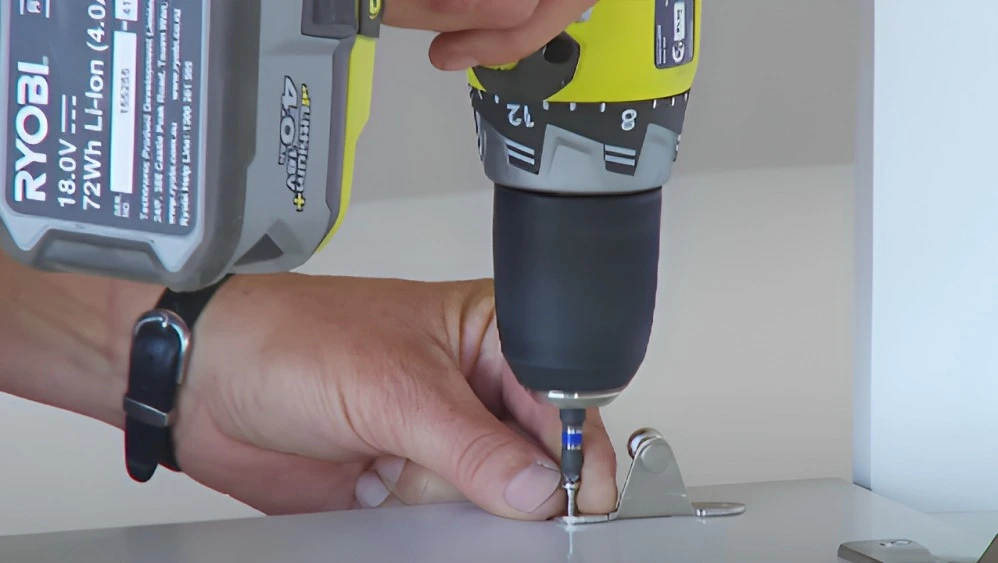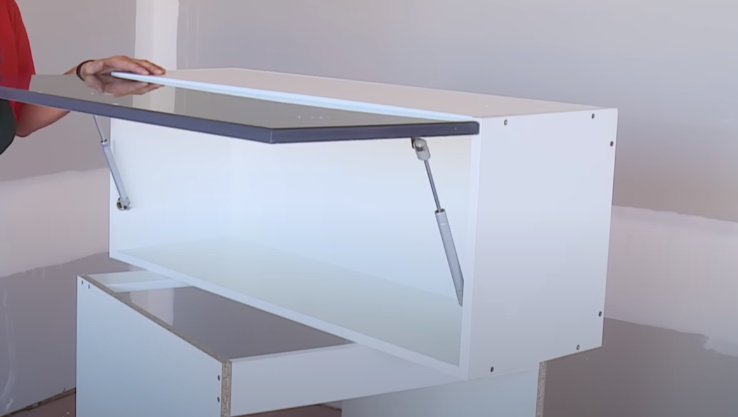Installing gas struts on your cabinets can greatly improve their functionality and appearance. Gas struts help in reducing the effort required to open and close cabinet doors, preventing them from slamming shut.
The smooth, silent motion of gas struts is perfect for cabinets that are used frequently. You can extend the life of your cabinet doors by minimizing the shock and strain of slamming them shut or not closing them properly.
If you are also looking to install gas struts on cabinet, this step-by-step guide is especially for you. In this guide, we will join you to help install gas struts on your cabinets easily. Are you Ready?
Choose the Right Gas Struts
Choosing the appropriate gas struts for your cabinets is crucial for the best performance and longevity. Here are several factors to consider:
Weight of the Cabinet Door: The strength of the gas struts, should match the weight of the cabinet door they will support. To ensure smooth operation, it’s essential to know the exact weight of your door.
Size and Type of Cabinet: The size of your cabinet door will also impact your choice of gas struts. Larger doors may require multiple struts to distribute the force evenly and prevent any torsional stress.
Length of the Gas Struts: Determining the correct length of the gas struts is vital for ensuring that the cabinet doors open at the desired angle. Measure the distance from where the strut will attach to the cabinet to the intended point on the door.
Keep in mind that the strut should be long enough to support the door in its fully open position while compact enough to fit neatly when closed.
Tools You Will Need
Before you begin the installation process, gather the following tools to ensure a smooth and efficient setup:
- Drill
- Screwdriver
- Measuring Tape
- Pencil
- Level
- Safety Glasses
- Step Ladder
- Adjustable Wrench
Step 1: Mark the Mounting Points
To ensure a precise and stable installation of your gas struts, it’s important to carefully mark the mounting points for both the round mounting bracket and the rectangular mounting bracket.
Round Mounting Bracket (Cabinet Frame):
- Determine the ideal position on the cabinet frame where the round mounting bracket will be secured. This generally is on the inner side of the frame, near the edge where the door hinges.
- Using a pencil, mark the spot where the center of the round mounting bracket will be placed.
- Ensure the bracket is aligned properly and there is enough clearance for the gas strut to operate freely without any obstructions.
Rectangular Mounting Bracket (Cabinet Door):
- Identify the corresponding position on the inside of the cabinet door where the rectangular mounting bracket will be installed. This bracket typically goes about one-third of the way down from the top of the door.
- Mark the location with a pencil, ensuring the bracket will be in line with the round bracket on the cabinet frame when the door is closed.
- Double-check that the distance between the brackets matches the length of the extended gas strut for proper functionality.
By following these steps, you ensure that the gas struts will smoothly support the opening and closing of your cabinet doors. Proceed to the next step for guidance on the actual installation process.
Step 2: Install Round Mounting Brackets
After marking the mounting points, now it’s time to install round mounting brackets on the cabinet frame.

- Position the Bracket: Align the round mounting bracket with the pencil mark on the cabinet frame that you previously determined. Hold the bracket firmly in place, ensuring it doesn’t miss place during installation.
- Drill Pilot Holes: Using a drill bit suitable for your cabinet material, drill small pilot holes at the screw points of the bracket. Pilot holes help guide the screws and prevent the wood from splitting, ensuring a stable installation.
- Attach the Bracket: Insert the screws through the holes in the round mounting bracket and into the pilot holes. Use a screwdriver or a power drill to fasten the screws securely. Make sure the bracket is tight and stable, with no movement.
- Check Alignment: After securing the bracket, double-check that it is properly aligned with your previous markings and the overall layout of the mounting points. This ensures that the gas strut will function smoothly.
With the round mounting bracket securely installed, you are ready to move on to attaching the rectangular mounting bracket on the cabinet door.
Step 3: Install Rectangular Mounting Brackets
Once you installed the round mounting brackets on the cabinet frame, now we are going to install rectangular mounting brackets on the cabinet door or lid.

- Prepare the Cabinet Door: Open the cabinet door to provide comfortable access to the interior of the door where the rectangular mounting bracket will be installed. Make sure the door is steady and won’t move during the installation process.
- Align the Bracket: Position the rectangular mounting bracket according to the measurements and markings you made earlier. Ensure that the bracket is level and properly aligned with its corresponding round bracket on the cabinet frame.
- Mark Screw Points: Using a pencil, mark the screw points through the holes in the rectangular bracket onto the cabinet door. This will guide you in drilling accurate pilot holes.
- Drill Pilot Holes: Choose an appropriate drill bit for your cabinet door material and carefully drill pilot holes at the marked screw points. Pilot holes help prevent the door from splitting and make it easier to insert screws.
- Attach the Bracket: Place the rectangular mounting bracket back in position, aligning it with the pilot holes. Insert the screws through the bracket holes and into the pilot holes. Use a screwdriver or power drill to fasten the screws securely.
- Verify Stability: Ensure the bracket is firmly attached to the cabinet door without any loose parts. The stability of this bracket is crucial for the proper function of the gas strut.
- Check Alignment: Finally, double-check that both the rectangular and the round mounting brackets are aligned correctly. Proper alignment will ensure that the gas strut can be attached easily and will operate smoothly.
Related Post: How to Install Exposed Cabinet Hinges?
Step 4: Test the Installation
With the rectangular mounting bracket installed, you’re now ready to proceed to the final step of attaching the gas strut to the brackets and then testing of installation.
- Open and Close the Cabinet Door: Gently open and close the cabinet door to test the functionality of the newly installed gas strut. Pay close attention to the movement and check for any resistance or unusual sounds.
- Observe the Operation: Ensure that the gas strut moves smoothly as the door opens and closes, and that it supports the door correctly without causing it to slam shut or remain partially open.
- Adjust if Necessary: If you notice any issues with the movement or stability, make the necessary adjustments. This may involve repositioning the brackets or tightening the screws. Double-check the alignment of both the rectangular and round mounting brackets.
- Final Verification: Once adjustments are made, repeat the process of opening and closing the cabinet door to confirm that it operates smoothly and securely.
By completing this step, you ensure that the cabinet door is safe, functional, and easy to use.
Related Post: How To Adjust IKEA Cabinet Hinges?
FAQs
Can I Install Gas Struts on Any Cabinet?
Yes, gas struts can be installed on almost any cabinet as long as there is enough space to accommodate the strut’s length and movement. Ensure your cabinet structure is sturdy enough to hold the struts.
Can I install gas struts on existing cabinets?
Absolutely, gas struts can be installed in existing cabinets. You may need to make minor adjustments or add mounting brackets to ensure proper alignment and functionality.
How Do I Know Which Gas Strut to Use?
Choosing the right gas strut depends on the weight and dimensions of your cabinet door. Refer to the product specifications and load capacity charts, or consult with a supplier to find the appropriate strut for your needs.
Why should I install gas struts on my cabinet doors?
Installing gas struts on your cabinet doors provides smoother and softer opening and closing of doors. They prevent doors from slamming shut, reduce wear and tear, and improve overall user convenience.
Final Thoughts
Installing gas struts on your cabinet doors enhances the functionality and safety of your cabinets. With the correct installation and proper choice of gas struts, you can ensure smoother operation of your cabinetry.
Moreover, if you need any help installing the gas struts, you can ask us, without any hesitation, by leaving a comment in the comment box below. We will try our best to answer you as soon as we can. GOOD LUCK!

